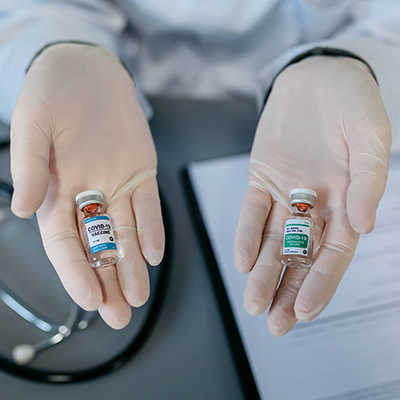January 8, 2021 -- Will the speed of biotech innovation seen during the COVID-19 pandemic be maintained going forward, or will the market revert to the status quo? A panel of speakers discussed these questions during a January 7 advance session of the Biotech Showcase, a virtual event to be held January 11-15.
The COVID-19 pandemic and the speed with which a vaccine was developed have made clear the key role of biotech development in the healthcare system. But this role can be threatened by federal healthcare policy in a number of ways, in particular efforts to control rampant healthcare costs.
The U.S. now spends 17.5% of its gross domestic product on healthcare, with individual Americans spending an average of $11,582 per person on healthcare every year. Prescription drug prices in the U.S. continually rank among the highest in the world, and it's no secret that the biotech industry relies heavily on the U.S. market to fund research and development.
Therefore, biotech firms often find themselves in the crosshairs of criticism due to the high cost of their products. But these prices reflect the risks of drug development, in terms of the heavy research and development (R&D) investments required and high commercialization failure rates.
The problem with a heavy reliance on the U.S. market to fuel biotech investment is that it leaves the biotech industry vulnerable to efforts by the federal government to control healthcare costs, such as through price controls on drugs. Peter Kolchinsky, founder and managing partner of RA Capital Management, explained that price control is toxic to innovation.
The biotechnology industry is a difficult sector to invest in, Kolchinsky explains, because investors have to really believe in an idea and be willing to wait years for products to reach market.
Affordable innovation
The panel agreed that the goal of the federal government and the pharmaceutical industry moving forward should be to make innovative drugs that people can afford. But with high R&D costs, companies (and investors) must have a way to recoup costs, years after the product goes to market.
There seems to be no consensus on an ideal solution to this problem of affordable innovation, but Kolchinsky noted that the "complexity of the science we now have is taking us beyond our current systems."
Past attempts at gaining price concessions from drug developers or healthcare services providers has been through the implementation of generics or biosimilars. The generics market has been moderately successful at lowering drug costs, but the heavy reliance on China and India for these products ultimately fails to support future innovation and the development of more effective medicines.
On the other hand, the biosimilars market has not worked out the way it was intended, according to Kolchinsky. High manufacturing costs and regulatory barriers prevent companies from entering the biosimilars market.
Funding biotech in the future
There are alternatives to the private sector to promote innovation cost-effectively, according to Dr. Julie Gerberding, executive vice president and chief patient officer at Merck. Gerberding was the first woman to serve as head of the U.S. Centers for Disease Control and Prevention (CDC), a post she held from 2002 to 2009.
Gerberding suggested that government healthcare efforts might benefit by moving toward a model similar to that used by the U.S. Department of Defense, where public-private partnerships between the government and industry incentivize productivity and innovation. Another example is the Biomedical Advanced Research and Development Authority (BARDA), part of the U.S. Department of Health and Human Services, which has partnered effectively with private-sector companies during the COVID-19 pandemic. Initiatives like these could be used in the future to facilitate these partnerships in the biotechnology industry.
Gerberding and several other speakers during the session called for the U.S. government to make health security a national priority. Gerberding pointed out that the government invests billions of taxpayer dollars (nearly half of its entire R&D budget) into the research and development of military weapons, which it hopes that it will never have to use.
On the other hand, federal investments in medical research and diagnostics to counter future epidemics pale in comparison. With future pandemics a near certainty, it seems critical that the government should invest more innovation to help avoid or mitigate anticipated crises, she believes.
If there is a bright side of the COVID-19 pandemic, it is that the crisis has shed light on the importance and urgency of science and technology for safeguarding our country and our people, the panel concluded.
"We are all part of the problem and the solution," Gerberding said. "We have to apply ourselves to find contemporary solutions. We've got a lot of work to do."
Do you have a unique perspective on your research related to biotechnology or drug development research? Contact the editor today to learn more.
Copyright © 2021 scienceboard.net









